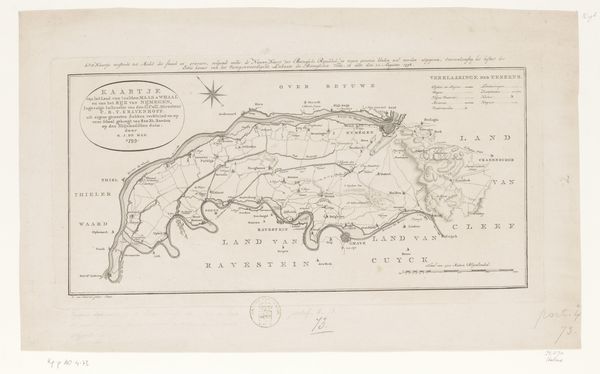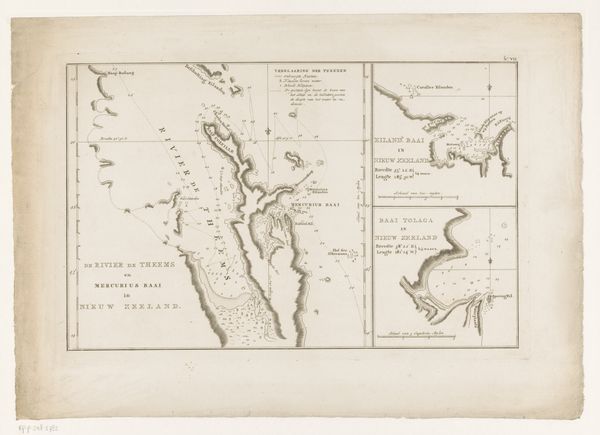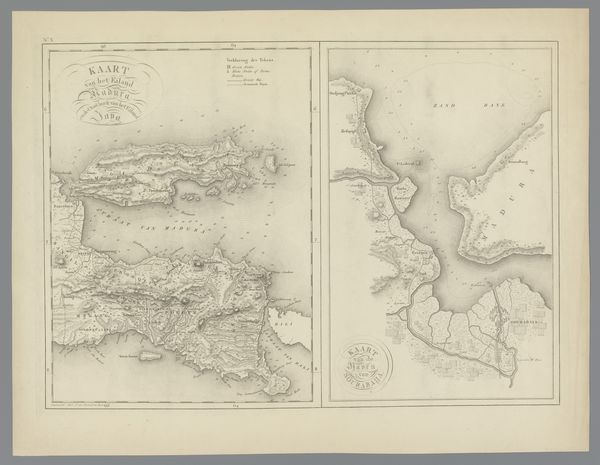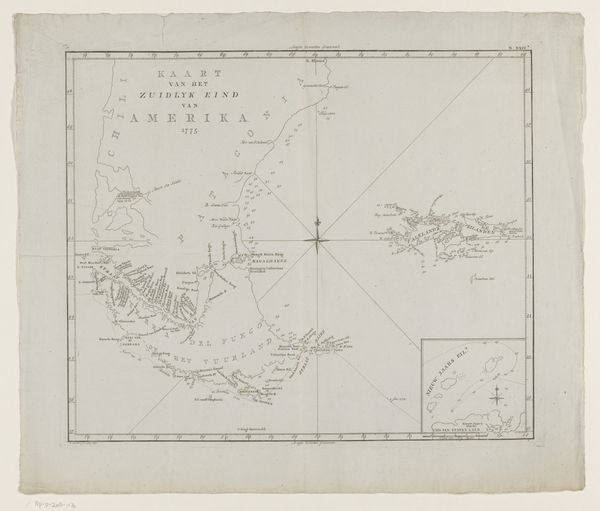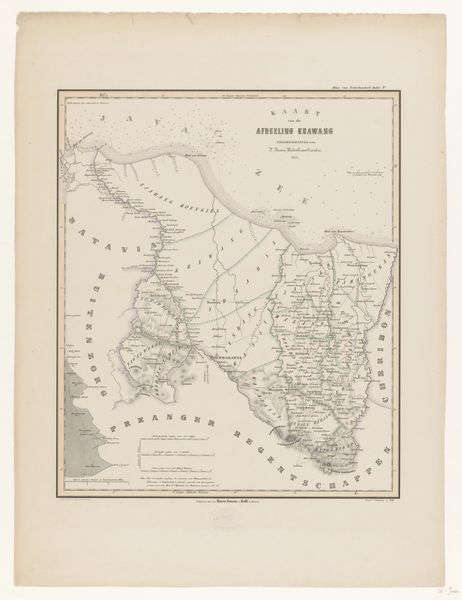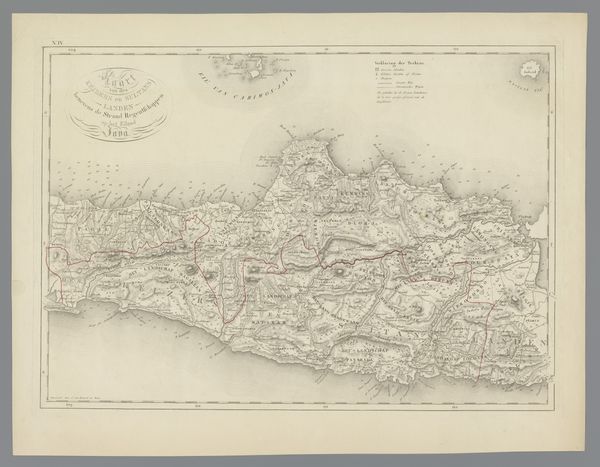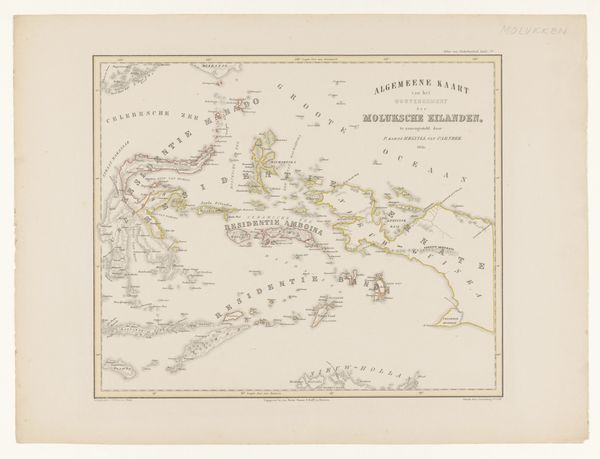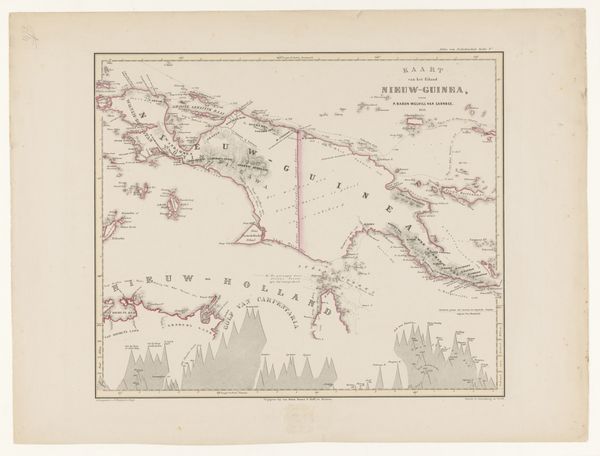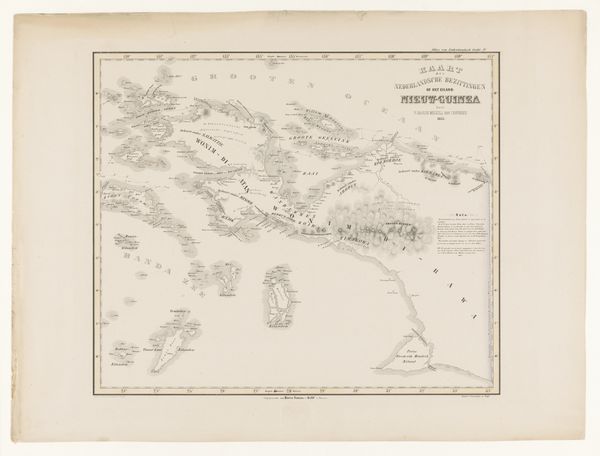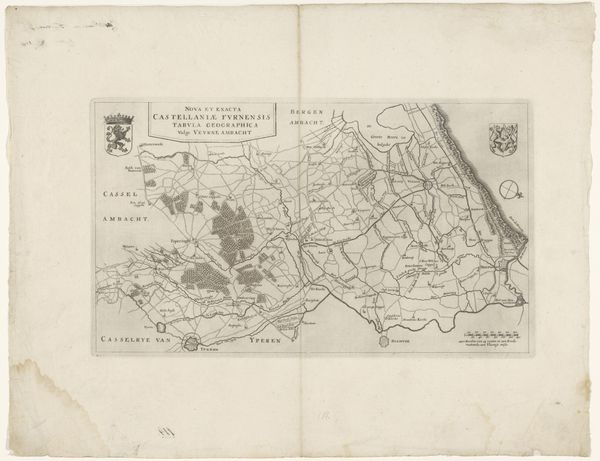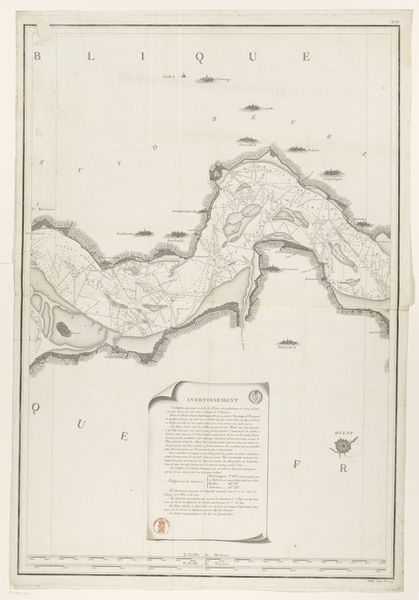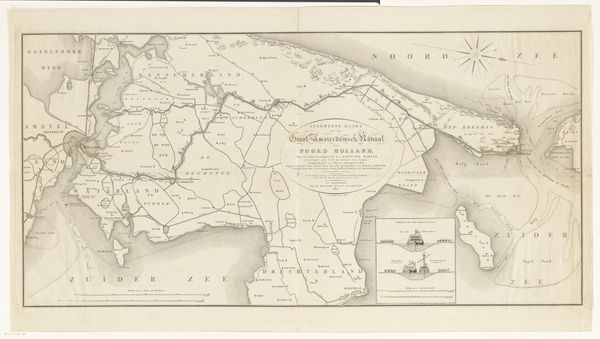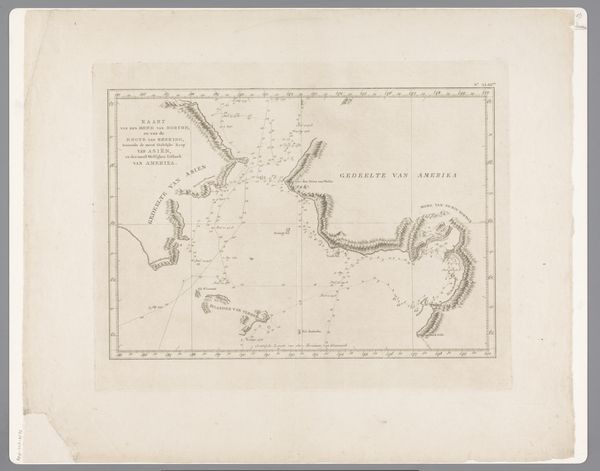
Kaart van Suriname met Caraïben, Curaçao en West-Afrika 1776 - 1851
0:00
0:00
danieliveelwaard
Rijksmuseum
print, paper, engraving
#
dutch-golden-age
# print
#
old engraving style
#
landscape
#
paper
#
orientalism
#
engraving
Dimensions: height 234 mm, width 301 mm
Copyright: Rijks Museum: Open Domain
Editor: This print, "Kaart van Suriname met Caraïben, Curaçao en West-Afrika" – a map of Suriname with the Caribbean, Curaçao, and West Africa– by Daniël (I) Veelwaard, dating from 1776 to 1851, presents a rather clinical, almost sterile view. It's an engraving on paper, with fine lines that delineate territories. How should we interpret this work, especially considering the time period? Curator: What you’re observing is precisely the tension inherent in colonial cartography. Maps weren't neutral depictions, but tools of power. They visually asserted dominion and legitimized colonial projects. Have you considered how the act of mapping itself might be an exercise in control and the suppression of Indigenous knowledge? Editor: That's a potent idea. It reframes the map not just as a guide, but as a form of propaganda, almost. But what about the inclusion of West Africa? How does that factor into this colonial narrative? Curator: The inclusion of West Africa is a critical component. It underscores the brutal reality of the transatlantic slave trade. Suriname's economy was built on enslaved labor. Showing West Africa in relation to Suriname and Curaçao visualizes the network of exploitation and forced migration that fueled Dutch colonial wealth. Doesn't it strike you as odd, this combination of precision in mapping and disregard for human suffering? Editor: It's chilling when you put it that way. The map seems to normalize a deeply unjust system. Is it fair to say that even seemingly objective depictions like this are laden with ideological baggage? Curator: Absolutely. Every line, every label, is a choice, and those choices reflect a particular worldview. By understanding the historical context, we can begin to deconstruct the power dynamics embedded within these seemingly straightforward representations. What is your understanding now of its place in art history? Editor: I now view it with far more skepticism. It is a historical object that demands critical examination, forcing us to confront the legacy of colonialism and slavery, as well as an entry into Dutch Golden Age printmaking styles and use of engravings on paper. Curator: Precisely. We've hopefully invited our audience to interrogate not just the map, but the systems of power it represents and sustains.
Comments
No comments
Be the first to comment and join the conversation on the ultimate creative platform.
